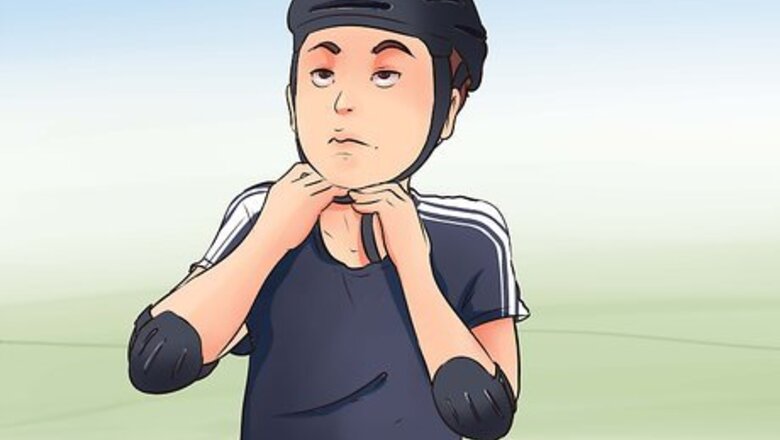
views
Learning How to Ride Without Training Wheels

Wear a helmet and safety gear. You should ‘’always’’ wear a helmet when you’re on your bike, but you might also want to wear other pieces of safety gear too! These make it less scary when you try to ride without training wheels. Since safety gear keeps you from getting hurt, you won’t be as nervous of falling off your bike or crashing. Here are some things you might want to wear the first time you try to ride without training wheels: Elbow pads Knee pads Wrist guards
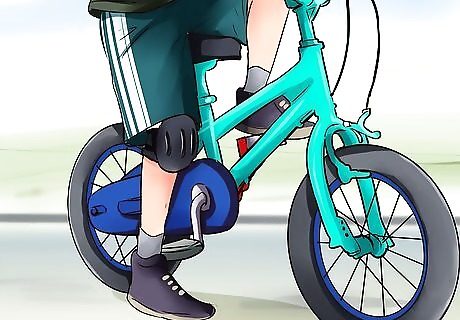
Make sure your feet can touch the ground. Bikes are less scary to ride when you know that you can stop yourself. Before you take your training wheels off, get on your bike and try to touch the ground with your feet. If you can’t reach, get a grown-up to help you lower the seat. It’s OK if you can’t touch the ground with both feet at once when you're sitting on the seat — you only need one to stop yourself when you're sitting down. You should be able to touch the ground with both feet when you're standing in front of the seat, though.
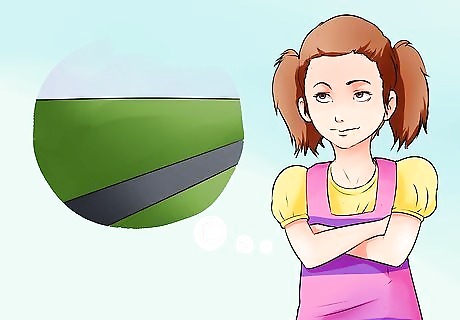
Find a flat spot to ride in. Bring your bike to a place that’s wide, open, and flat, like a park or a parking lot. Someplace with soft grass is best — it doesn’t hurt to fall on grass, so it’s not scary to practice riding on it. You can practice by yourself, but it’s easier if you have a friend or grown-up to help you! If your bike still has its training wheels on, get a grown-up to take them off before you go to the place where you’ll ride.

Practice pedalling and braking. Sit on your bike and hold yourself up by putting your feet on the ground. Put one foot on the pedal and push down! Push yourself forward with your other foot at the same time. Put both of your feet on the pedals and keep pedalling! If you need to stop, pedal backwards (unless your bike has a hand brake — then just squeeze it with your fingers). Don’t be afraid to put down your feet if you need to! The first few times you practice pedaling, it can feel like you’re going to fall, so don’t worry about stopping and putting your feet on the ground when you have to.
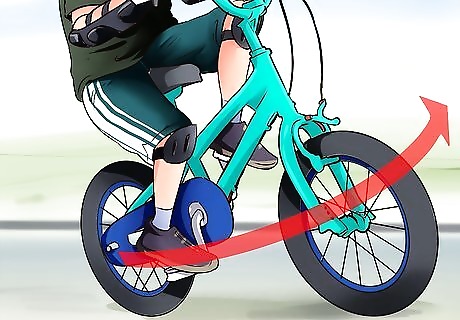
Practice turning while you pedal. When you have the hang of starting and stopping, try going left and right. While you’re pedalling forward, turn the handlebars just a tiny bit to the right. You should go to the right. Next, turn the just a little to the left. You should go to the left. Try turning a little more to each side — see how far you can turn without feeling uncomfortable. Don’t be afraid to stop yourself if you have a hard time turning! It's actually harder to turn when you're going really slow than when you're going really fast. When you're barely moving at all, balancing is tricky, so if you're having a hard time turning, try going a little faster.
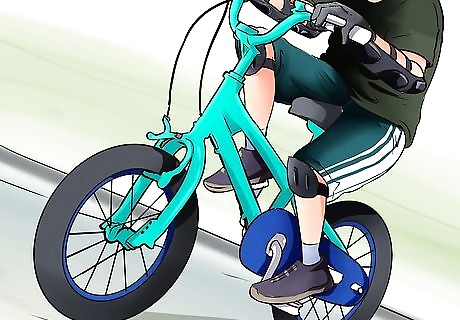
Practice going up and down hills. Next, find a small hill or slope. Try pedalling up it — you'll need to push a little harder than normal to get to the top! When you're at the top, try going down slowly. Use your brakes to keep slow. When you're at the bottom, go up again, and this time, go a little faster. Do this again and again until you can go down the hill without using your brakes. Be patient! It can take a while until you're able to go down a hill without stopping, so don't worry if you can't do it the first time you try. Start out with small hills. Don't try to ride down big hills until you're good at riding without training wheels.
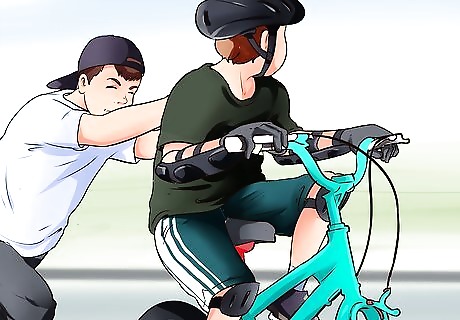
Get a friend or parent to push you if you need help. It's a lot easier to learn how to ride without training wheels if you have someone with you to help out. Try asking a parent, a friend who can ride without training wheels, or your brother or sister to give you a hand if you can. These people can make it easier to learn in a lot of ways, but one of the best ways they can help is by running next to you and holding you up until you can pedal on your own.
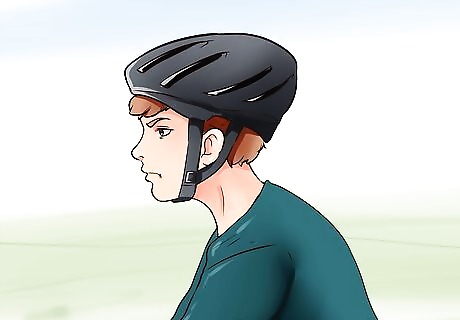
Don't give up! Learning how to ride without training wheels can be scary, but once you can do it, riding a bike is a lot more fun. If you can't ride without training wheels after the first day of practice, don't worry — you'll get it eventually! Try again with the help of a friend or grown-up when you have the chance. Never give up — riding without training wheels is something almost everyone has to learn how to do. Each time you practice, riding should get easier and easier until it's the only way you can ride!
Teaching a Child How to Ride on Their Own
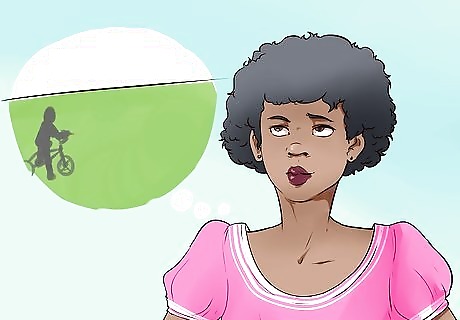
Take your child to an open area with a gentle hill. Though every child learns differently, for many children, slowly coasting down a long, gentle slope is one of the easiest ways to learn. Rolling forward at a slow, controlled speed allows children to get comfortable with the idea that staying upright on a bike without training wheels is almost as easy as staying upright on one with training wheels. Grassy spots can be great for this. Grass keeps kids from going too fast on their bikes and cushions any falls they may have, making the experience much less stressful for them. The last thing you want is for your child to take a bad spill and get so afraid of riding without training wheels that they won't try again.
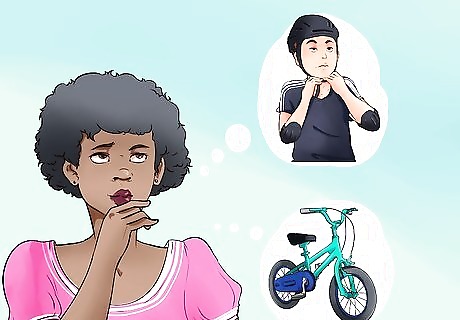
Make sure your child is well-protected and their bike is a good height. Don't let your child get on their bike without a helmet. Not only is it dangerous, but also a very bad habit to let your child get into. You might also want to consider letting your child wear extra protective gear like knee and elbow pads — for children who are nervous about the idea of riding, this extra protection can make them feel more confident. Finally, make sure that your child can reach the ground with their feet when sitting on the bike, adjusting the seat as necessary. Note that some places have laws making it mandatory for all bike riders below a certain age to wear a helmet. In some circumstances breaking these sorts of laws can count as a misdemeanor offense for the parent.

Let your child coast downhill while you hold them. When the child's ready to ride, let them gently roll down the hill or slope you're practicing at. Hold on to their shoulders or the back of their seat to keep them upright. Repeat this a few times until your child is confident and comfortable moving forward on their bike with your help. As you walk or jog next to the bike, be careful not to put either of your feet in front of (or between) the wheels.

Let your child coast using their feet to stop themselves. Next, let your child coast the same slow, easy route down the hill as before, but this time, don't hold them unless they need it. Instruct the child to use their feet to control themselves or stop themselves as needed. This teaches the child the all-important balance skills needed to stay upright on a bike in a safe, controlled setting. If your child starts to lose control, grab them to keep them upright. Though a few spills may be unavoidable, you'll probably want to avoid them if you can, as they can make your child scared to continue.

Let your child coast using their brakes. Next, do the exact same thing as before, except, this time, tell the child to use their bike's brakes to control their speed. When they get to the bottom, tell them to stop with their brakes. Repeat as needed until the child is confident slowing themselves and stopping without your help. Teaching the child that they can always stop the bike if they heed to is a very important part of building the child's confidence on the bike. Most children's bikes have foot brakes — in other words, the child has to pedal backwards to brake. Many bike training resources recommend foot brakes for children learning to ride without training wheels because learning how to use the hands in addition to all of the other skills that riding without training wheels requires can be overwhelming for young children. However, if your child's bike has a hand brake, it's still perfectly possible for them to learn on it — it may just take a little more practice.
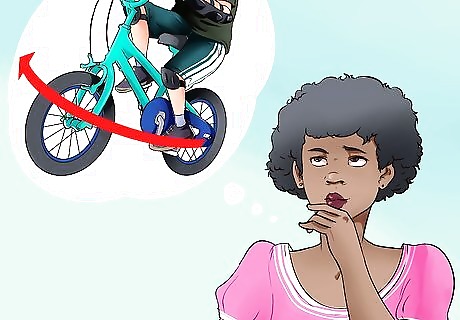
Teach turning in a flat area. Next, mover to a flatter area. Have the child start pedaling forward, then brake to stop. Repeat this several times until they are comfortable. Then, direct your child to try turning the handlebars just slightly while they ride forward. Walk next to the child as they turn, supporting them as needed. It can take some time for the child to get confident turning, so be patient. Ideally, the child should learn to lean into the turns ever so slightly. However, this can be difficult to communicate to young children, so you may want to have it be something the child discovers on their own.
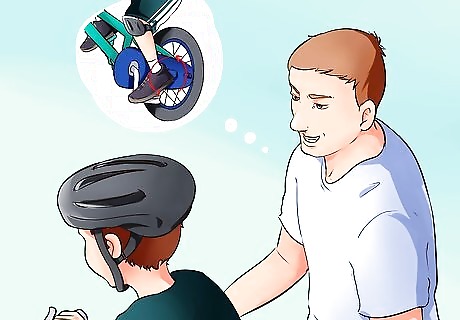
Teach your child how to pedal up a paved incline. Next, have your child pedal up a gentle slope. Here, a hard surface can be better than grass because grass can make it hard for the child to gain enough speed to make it up the hill. Tell the child to push hard on the pedals and, as always, support them as needed to prevent them from falling.
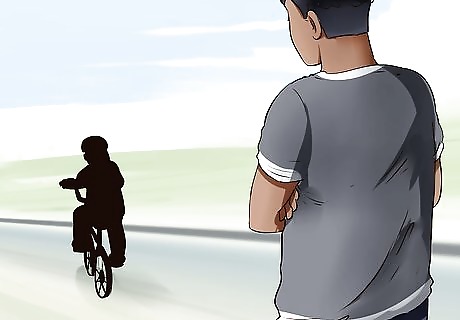
Gradually reduce your support. As your child practices their skills, slowly start holding onto them less and less until they're comfortable with you simply walking beside them. Then, slowly stay further and further away from the child as they ride until they're comfortable riding without you next to them at all. Slow, steady progress is the key here — you basically want the child to start riding on their own without even knowing they're doing it. Be prepared to "go backwards" for a short while if your child takes a nasty spill. It's better to offer your support after a fall than to make your child go it alone — this can turn them off from of biking on their own, making it harder to teach them essential riding skills in the long term.
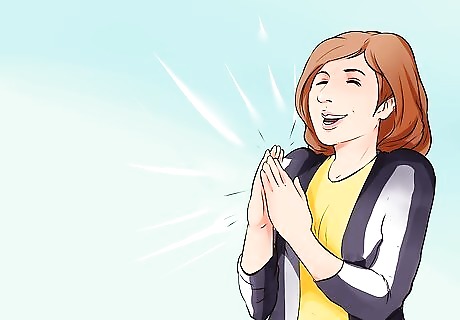
Use positive reinforcement. Stay upbeat and positive as you teach your child to ride without training wheels. Praise them for the progress they make. Tell them that they make you proud when they finally get to the point of being able to ride on their own. Don't berate them for making mistakes or push them to do things they're not comfortable doing. You want your child to eventually like riding their bike — if they do, they'll eventually be able to continue teaching themselves without any help from you. Positive reinforcement, the practice of giving a child rewards for good behavior, is recommended by many serious parenting resources. Positive reinforcement teaches a child what good behavior is while giving them love and attention, which are important for any child.
Learning Advanced Skills

Try a bike with hand brakes. Eventually, most kids stop using bikes with foot brakes and start using ones with hand brakes. Hand brakes give the rider a little more control by allowing them to choose which wheel to brake with. To use a hand brake, simply squeeze the metal bar in front of either hand grip. The back wheel brake usually slows the bike down more gradually, while the front brake slows the bike down more quickly — be careful not to use the front brake too hard or you might go over the handle bars! Though every child learns at their own pace, in general, most kids are capable of learning to use hand brakes after about six years of age.
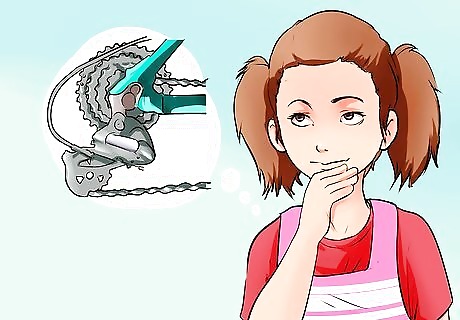
Try using a bike with gears. Just like most kids eventually start using hand brakes, sooner or later, most kids eventually learn how to ride a bike with gears. Gears make it easy to go very fast, climb steep hills, and maintain a "cruising" speed without pedaling hard. To use gears, simply push the lever or switch near the hand grips in either direction. You should notice it suddenly get easier or harder to pedal — the harder it is to pedal, the faster your pedaling will make you go. Again, every child learns at their own pace. Most kids from ages 9-12 are capable of using bikes with gears after a little basic training.
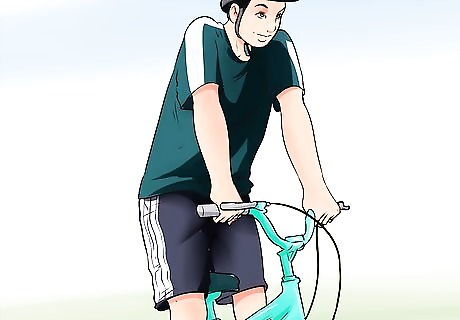
Try standing while you pedal. Standing up while you pedal instead of using the seat lets you push on the pedals extra-hard, which makes this a great way to get up hills or gain speed very quickly. In addition, you have to be able to stand up on your bike to do lots of bike tricks (like the bunny hop below). You may find that it's tricky to balance at first or that your legs get tired quickly when you first try to stand up while pedaling. However, with a little practice, it's not hard to build up the strength and balance you need to master this skill.
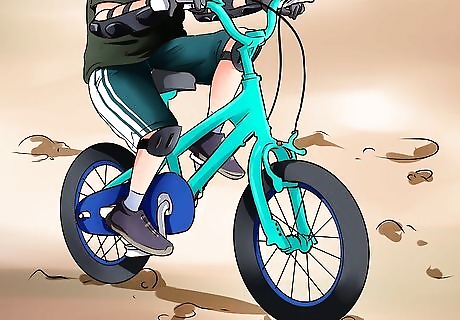
Try biking off-road. When you're comfortable biking on clear, even surfaces like streets, sidewalks, and fields, try biking on an off-road trail. You'll find that this is a little different than biking on a road — it's usually slower, bumpier, and requires you to watch the path in front of you more. However, off-road biking can be a great way to exercise and see parts of the wilderness you haven't seen before, so give it a shot!

Try doing a bunny hop. When you feel confident riding your bike at any speed and in any location, try learning a few easy tricks! For example, you can try doing a bunny hop by working up to a slow speed, standing up, and pulling up on the handle bars as you push off of the ground and throw your weight upwards. In the air, lean forward to level out so that you hit the ground on both wheels. When you get good at this, you should be able to pull off a small "hop" which is great for getting you up curbs without stopping. Don't be discouraged if you fall or "wipe out" a few times when you're trying to learn the bunny hop and other tricks. Minor nicks and bruises are part of the process of learning — you can't learn without making a few mistakes!



















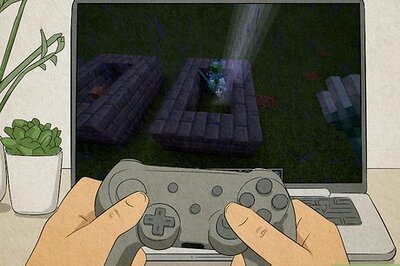
Comments
0 comment